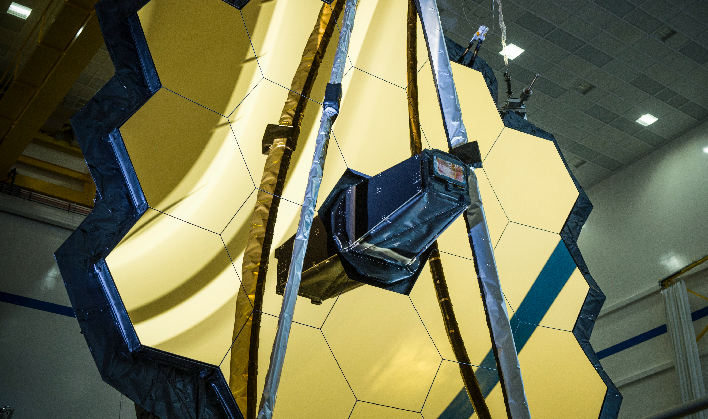Why NASA Engineers Are On Edge As James Webb Space Telescope Nears Christmas Launch

JWST is nearing its final countdown to launch as the space telescope is set to begin its journey into space Christmas morning at 7:20 a.m. with a 32-minute launch window. This comes after a one day delay due to weather conditions and a slightly longer delay due to an unforeseen incident. But all signs are pointing to the day JWST finally begins its epic journey that will take it 1 million miles (1.6M km) away from Earth.
The following is part of a story we published December 11, 2021, that discussed how you can use an app from NASA on your smartphone and have an AR view of JWST in your own backyard. We felt the content below was worth posting on its own as it discusses the many intricate and complex actions that the James Webb Space Telescope will have to successfully complete before it ever captures its first image in the depths of space. The first 29 days following launch will have NASA and its International partners, the European Space Agency and the Canadian Space Agency, biting their finger nails.
Once the telescope completes 206 seconds of flight, at an altitude of about 75 miles (120 km) above the atmosphere, the observatory will be separated from the two halves of the rocket fairing that shields the observatory during ascent. Shortly after, ground teams will await communication from JWST. At this point Webb will separate from the launch vehicle approximately 28 minutes after launch, and from this moment on, the ground team at the Space Telescope Science Institute in Baltimore will be in full control. This will also be the beginning of the most complex sequence of deployments ever attempted in a single space mission.
Approximately 31 to 33 minutes after launch, Webb will extend its solar array, stopping the drain on the observatory's internal battery. This will ensure it can power the highest data rate communication to the ground through NASA's Deep Space Network (DSN). The onboard medium and high-gain antenna will deploy at the 2 hour mark.
After passing the Moon nearly two and a half days following launch, JWST will perform its first large deployment, the extension of its sunshield frame known as a utilized pallet structure. It will fold down nearly three days after launch, opening the observatory up to continue expanding. This marks the beginning of all major deployments and is set to take approximately five hours for both front and back pallets to fold down completely. At four days a deployable tower will extend to separate the telescope mirrors and instruments from the spacecraft bus. It is this separation that will effectively isolate the telescope from possible vibrations and conducted heat coming from the spacecraft bus.
Around five days after launch, the sunshield membrane deployments begin as the special covers that protect the sunshield during ascent will roll out of the way. Following this is a vital and critical point in the mission when all of the 107 sunshield release mechanisms are required to fire on cue and pull themselves out to free the membranes. Once this is completed, two wings known as mid-booms extend to pull each of the sunshield layers out into their characteristic diamond shaped formation nearly a day later. Once full deployment has been achieved, each of the five layers are tensioned and separated using special pulleys and motor systems. This part of the deployment should be completed around day eight or nine post-launch.
After the conclusion of the sunshield tensioning, a special radiator behind the primary motor is deployed to enable extra cooling for the scientific instruments. The next step is when JWST's optics, and NASA's eye on the cosmos opens up. One of the most important deployments will take place on the tenth day, which will include the telescope deployment which will latch into place the tripod holding the crucial secondary mirror. The Primary mirror is set to deploy on the 12th day and at 13 days Webb's large-scale deployments are expected to conclude with the locking in of its primary mirror wings.
The days leading up to day 29 will include a multi-step process to move all 18 primary mirror segments out of their launch configuration. This will also be when 126 extremely precise actuators on the backside of the mirrors will position and bend or flex each mirror into a specific prescription, a process that will last months. Then on day 29, the team will fire the thrusters on JWST once again in order to place it into its prescribed orbit at the second Lagrange point, or L2, nearly one million miles away.
It is easy to see how much work and dedication has been put into The James Webb Telescope. It is also easy to understand why the teams back here on Earth will be on the edge of their seats as they watch each and every small part move into place over a period of days following launch. With this being a one shot deal, NASA and the rest of the world watching are hoping everything works as it was designed to. If you would like to watch the launch live, NASA will be providing live footage via its YouTube channel tomorrow morning.

